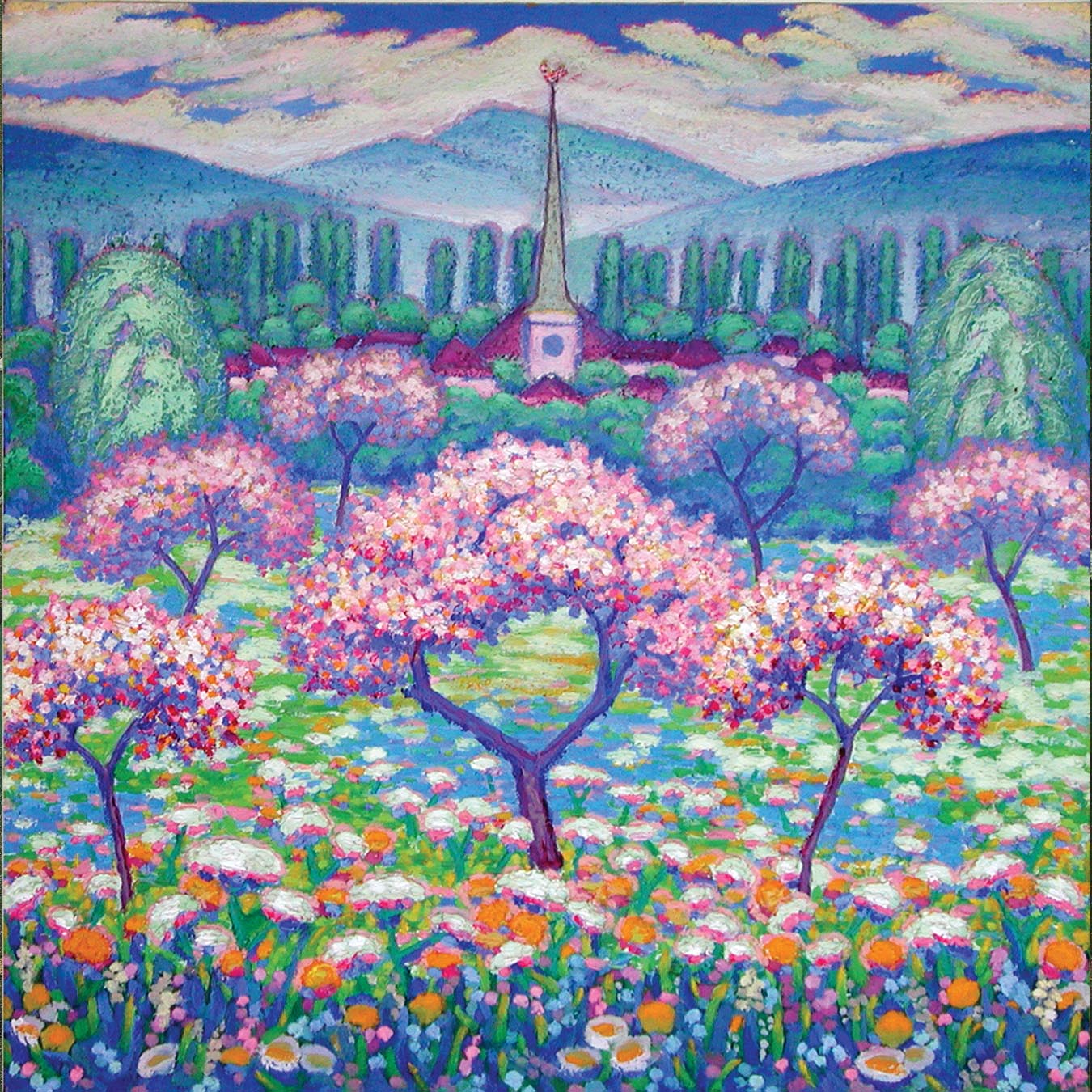Cherry blossoms and church, 1913
 | CHERRY BLOSSOMS AND CHURCH 1913 Oil on hardboard 34 x 34 cm |
A landscape depiction of cherry trees in full bloom in the middle of a flower meadow.
The petals of the trees change from rich reds to delicate white-pink colours. The pastos are pointedly depicted in meadow and trees.
In the distance, a village surrounded by trees and mountains stretches out. In the centre, a church can be seen, which is marked by the church tower in contrasting colours and shapes.
The steeple rises impressively and powerfully from this scenery. Like a finger pointing, it directs the gaze upwards to the sky and thus gives the work a symbolic value. This upwardly directed line of sight is further underlined by the cypresses in the background and the targeted placement of the cherry trees in the foreground and middle ground.
These also form the motif centre of this spring-like scenery. The symmetrical arrangement of the trees is almost mirror-image-like, more than just a mere observation of the landscape, but – as is so often the case with André Evard – a decorative and ordering element that emphasises the decorative character of his works.
As a student of Charles L’Eplattenier, a well-known representative of Style Sapin, Evard’s ornamental principles of order are borrowed from the idea of Art Nouveau.
But Evard interpreted this approach in the spirit of modern art. Brush style and formal language opens up a more expressionist character.
Again in the manner of the Impressionists, Evard avoided the use of black paint and marked shadows and dark areas with corresponding shades of blue. True to the Impressionists’ conviction, the Swiss artist went out into nature to capture the true colourfulness and light situation of nature.
This is also evident in one of his works from 1914, which shows the landscape with the village from a point of view which is closer this time: Church with cypresses, 1914, oil on hardboard, 34 x 34 cm.
His love for the landscape around his hometown La Chaux de Fonds becomes obvious. At the same time he succeeds in masterfully capturing the spirit of spring.
Often Evard was in nature and immersed himself in the forms and colours to be seen there. A love that would inspire him for a lifetime.